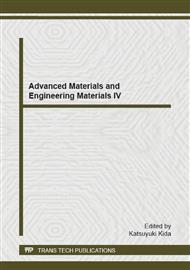p.288
p.293
p.297
p.302
p.309
p.315
p.319
p.323
p.327
Metallic Mesh as Capillary Structure Applied in Heat Pipe Heat Exchanger for Heat Recovery
Abstract:
This work presents a theoretical and experimental analysis of a heat exchanger assisted by five heat pipes made of copper with a metallic mesh 100 of stainless steel which was used as capillary structure. All heat pipes used water as the working fluid and were designed based on the capillary limit model. The heat pipes were developed and tested under heat loads varying from 20 to 50 W before application into the heat exchanger. The theoretical and experimental results were compared and all heat pipes worked satisfactorily. Thereafter, it is presented the development of heat pipe heat exchanger which was tested under heat loads varying from 100 to 250 W. The highest temperature measured on the external surface of the heat pipes was 90 oC and the heat exchanger thermal efficiency varied from 74 to 80%. It is showed that the use of a stainless steel mesh as a porous wick was proved to work successfully in heat pipes.
Info:
Periodical:
Pages:
309-314
Citation:
Online since:
December 2014
Keywords:
Price:
Сopyright:
© 2015 Trans Tech Publications Ltd. All Rights Reserved
Share:
Citation:


